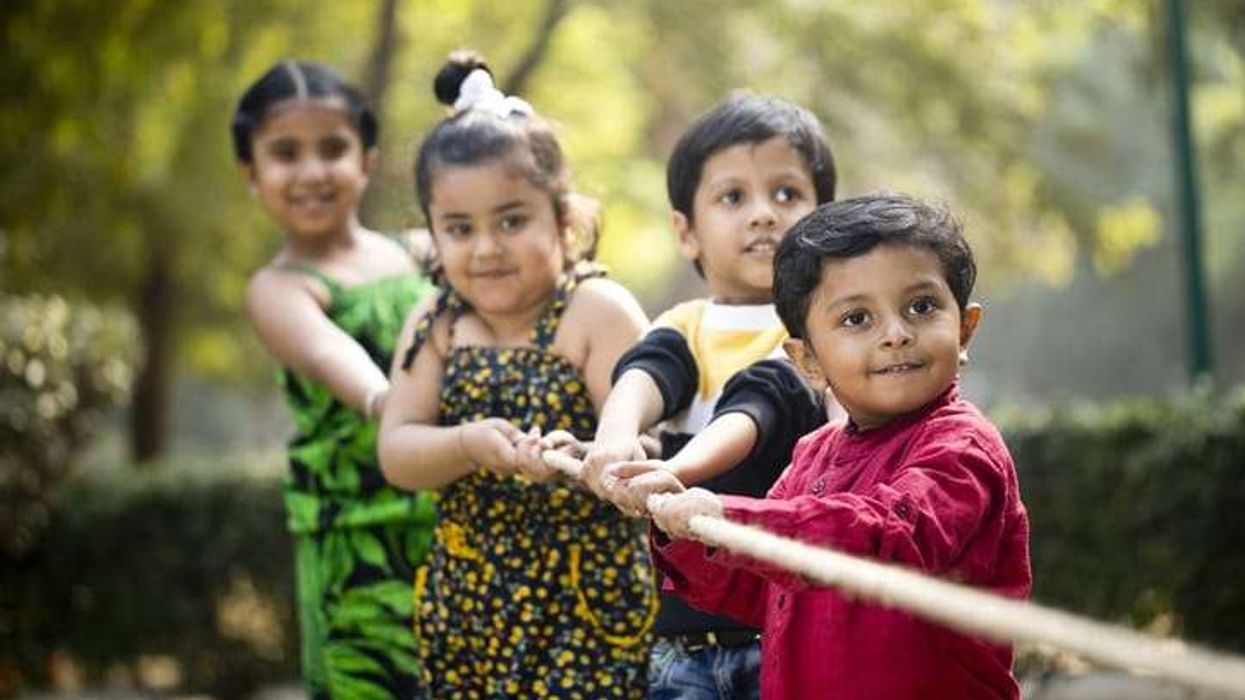by S NEERAJ KRISHNA
BHANGRA in the time of coronavirus?
Manchester-based journalist Rajeev Gupta has seen scepticism make way for optimism as his online “bhangra-plus-exercise” training sessions recently won him the Points of Light award for “lifting the bodies and souls of thousands”.
When the UK government announced a lockdown in March, Gupta’s regular ‘bhangracise’ classes – attended by about 40 to 50 people in Manchester – took a hit.
Several participants suggested the online route. “I was hesitant, as I am not very tech-savvy,” said Gupta, who has been teaching bhangracise for 15 years. “However, I gave it a shot, and was overwhelmed with the response.”
The BBC producer said he discovered that virtual bhangra was a great way to bring people from diverse backgrounds together, while helping them boost their physical and mental well-being.
Gupta explained he was driven by the belief that bhangra – “a peppy dance that gets the endorphins going like no other” – could uplift the mood of people while helping them stay fit.
That concept eventually received validation from prime minister Boris Johnson, who recently said he was “delighted” to recognise Gupta as “a Point of Light for so many during this difficult time”.
“Over the last few months, your online bhangra classes have brought a surge of energy to participants across the country and beyond, lifting the bodies and souls of thousands who have been staying at home during our battle against coronavirus,” he noted in a personal letter.
Earlier, Gupta’s “bhangra in the living room” initiative saw him being named as a “Local Hero” by the Co-Op.
His virtual bhangracise sessions, however, did not remain ‘local’. They went global, with over 100,000 viewers across the globe, including people from India, the US, Canada, Australia, New Zealand, and the UAE.
“I realised I can reach so many more people across the world through the online space,” said Gupta, whose bhangra classes have students aged between four and 70. “The lockdown facilitated a mindset shift where, out of necessity, people were more willing to connect via the online medium. It means that, as opposed to 40-50 local people in my area, I could reach an unlimited number of people across the world.”
There were even families and friends from various cities coming together on video-conferencing platforms by streaming the videos live, he added. Sessions were offered free, as Gupta believed they “were serving a social good”.
However, he said he received “huge payments” in the form of “appreciation from people telling me how it was helping them mentally and physically”.
“It’s a very positive energy… and the excitement and uplifting music leave people feeling really high and wanting more,” said the father of two.
“I have had amazing messages, especially people telling me that it’s really helped with their mental health. One lady said her daughter was really struggling in life, and joining the sessions together had brought them closer and really helped her daughter’s state of mind.”
Gupta stressed that bhangracise was an “excellent full-body workout” that helped to “improve cardio health, fitness levels, fat-burning and muscle strengthening”.
Moreover, similar to yoga, bhangra “brings together people from various backgrounds, and leads to positive interactions”, he said.
“I always try give people an understanding of where things come from, what they mean, and that just helps build understanding and awareness,” explained Gupta, whose job as a journalist sees him cover topics such as diversity and culture.
“For instance, bhangra doesn’t really have martial roots, as many believe. It was dance of joy that farmers indulged in during harvest seasons, or at the end of a hard day’s work.
“For sure, that is encapsulated in its spirit. The music, the expressions and movement are all very upbeat and high-spirited... that’s what makes it special.”
Thanks to his Punjabi roots, Gupta had a natural inclination towards bhangra right from his childhood, he said.
“My mum kept encouraging me and my brother to get involved with Indian culture,” he recalled. “So, by the age of about five, I started dancing bhangra.
“Growing older, I began to learn it seriously, and started performing with a team in Reading in my teens.”
Gupta went on to launch the Aston Bhangra Society at Birmingham University, and was teaching there before he moved to Manchester, where he taught at the Manchester Bhangra Society and eventually launched bhangracise.
Now, with many parts of the world lifting their Covid-19 lockdowns, Gupta said that “people will probably go back to their usual ways” and the popularity of virtual classes might fall.
“But I do think there is still an opportunity to carry on at least one online class a week,” he added. “I’m always trying to promote bhangracise as much as possible because it can help lots of people, and I hope it gets a bigger platform.
“Take India, for instance. It’s an ideal place for bhangracise to explode, considering the large population of young and vibrant people.”
Gupta’s fitness sessions are available at www.bhangracise.co.uk and www.the bhangrateam.com.











